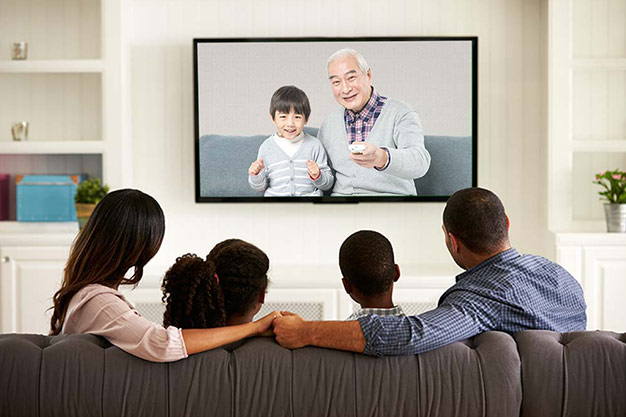
Overview
The outbreak of the coronavirus COVID-19 has impacted people in varying ways on an international scale. It is understandable that during times like this, people may be feeling afraid, worried, anxious and overwhelmed by the constantly changing alerts and media coverage regarding the spread of the virus.
“Physical distancing” is a better term than social distancing. We have to stay socially connected through this. Community building, togetherness, and emotional connections via electronic devices are imperative for our mental health.
We can stay in connection with each other on the phone, webcam, and many other online formats. Now is a time to be intentional and interactive and not to isolate. We are wired to be social and luckily can maintain that with technology.
There are many and varied ways people react to unexpectedly having to spend more time with their spouses, lovers, relatives, and so on. Some folks do fine with this extended proximity, but others find themselves dealing with increased stress levels and unresolved issues from the past that become magnified, whether with our teenage children, our spouses or our relatives. Being cooped up can sometimes bring out the worst in us.
Those who are alone for long periods of time can experience feelings of anxiety or depression. Think of this as a time not as “social distancing,” as it’s being called, but rather “physical distancing.” We may be stuck in the house, but there are so many ways for us to reach out and connect with others and doing so helps regain perspective on our connectedness.
While it is important to stay informed, the following are some mental health and wellbeing tips and strategies to continue looking after ourselves and each other during these difficult times.
Manage your exposure to media coverage as this can increase feelings of fear and anxiety. Be mindful of sources of information and ensure you are accessing good quality and accurate information.
Follow a “calm yet cautious” approach – do you best to remain calm and be mindful not to contribute to the widespread panic that can hinder efforts to positively manage the outbreak. Ensure you are following directives issued by the government, medical advice and observe good hygiene habits.
Show compassion and kindness to one another – these times of fear, isolation (both physical and social) and uncertainty are when it is most important that we strengthen our sense of community by connecting with and supporting each other. Remind ourselves that we can manage this much better together in solidarity, and that COVID-19 doesn’t discriminate – it can affect anyone regardless of age, gender, nationality or ethnicity.
Actively manage your wellbeing by maintaining routines where possible, connect with family and friends (even if not in person), staying physically active, eating nutritious foods and seeking additional support by contacting support groups such as the Samaritans or seek further professional support as required.
Strategies to cope with social distancing, self-isolation or quarantine
Going into a period of social distancing, self-isolation or quarantine may feel daunting or overwhelming, and can contribute to feelings of helplessness and fear. In addition to the above, we encourage the following;
- Perspective – try to see this time as unique and different, not necessarily bad, even if it something you didn’t necessarily choose
- Connection – think of creative ways to stay connected with others, including social media, email and phone
- Be generous to others – giving to others in times of need not only helps the recipient, it enhances your wellbeing too. Is there a way to help others around you?
- Limit your exposure to news and media. Perhaps choose specific times of day when you will get updates, and ensure they are from reputable and reliable sources.
- Stay connected with your values. Don’t let fear or anxiety drive your interactions with others. We are all in this together!
- Daily routine – create a routine that prioritises things you enjoy and even things you have been meaning to do but haven’t had enough time. Read that book, watch that show, take up that new hobby.
- Try to see this as a new and unusual period that might even have some benefits.
Staying connected through the COVID-19 crisis
Research after the SARS pandemic in Hong Kong in 2008, provides evidence of the significance of connection through epidemics. It found that residents in Hong Kong experienced increased social connectedness, which offset the negative mental health impacts of the pandemic.
As connection is so important during this time, here are some tips on staying connected to others during this time. Remember – we are all in this together.
If there is someone you think may struggle through social isolation, it is important to reach out to them and let them know you care:
- Call them to check on their welfare
- Send an email
- Leave a note under their door
- Don’t underestimate the power you have to offer hope to another person.
Get creative with how we interact. Here are some ways to stay connected:
- Set up a gratitude tree – where every member posts a message or sends a text to other members to share something they are grateful for.
- Find a buddy, or group of, to set daily challenges with. These could include a healthy habit, a mindful practice, a creative pursuit. Be sure to encourage and check in daily to stay motivated.
- Set dates and times to watch the same TV shows/movies with someone and message each other your thoughts along the way… kind of like GoggleBox but you’re not sharing the couch!
- If your local community has one, join its social media group! This will keep you up to date with what’s going on directly around you. It may also include ways you can perhaps reach out and connect with someone less fortunate than you and ways to assist them.
Helping children cope through COVID-19
This is an uncertain time for everyone, and children may be impacted by fear and anxiety. Here are some tips on how to ensure your children are supported;
- Give your children extra attention and reassurance. Where possible, minimise their exposure to media and social media that may heighten anxiety
- Acknowledge your own feelings about the situation and let children know it’s okay to share their own feelings.
- Include your children in plans and activities around the house.
- If you don’t see an improvement in 4 weeks, or if you’re concerned, seek professional help (earlier if needed).
One last thought: There’s also value in adopting a perspective of gratitude, despite the hardships created by physical distancing.
We can perhaps take comfort in knowing that our isolation will be temporary, and that we have access to ways of staying socially connected that many people do not. We just need to reach out and make sure we preserve the ties that bind us together.
Reputable sources of information
- Ministry of Health Malaysia http://www.moh.gov.my/index.php/pages/view/2019-ncov-wuhan
- World Health Organisation – http://www.who.int
- Official portal of Government of Malaysia https://www.malaysia.gov.my/portal/content/30936
- Corona tracker, https://www.coronatracker.com, is a community-based open-sourced project by more than 460 volunteers consisting of data scientists, researchers, developers and designers from all over the world.
- @MedicalMythbustersMalaysia


